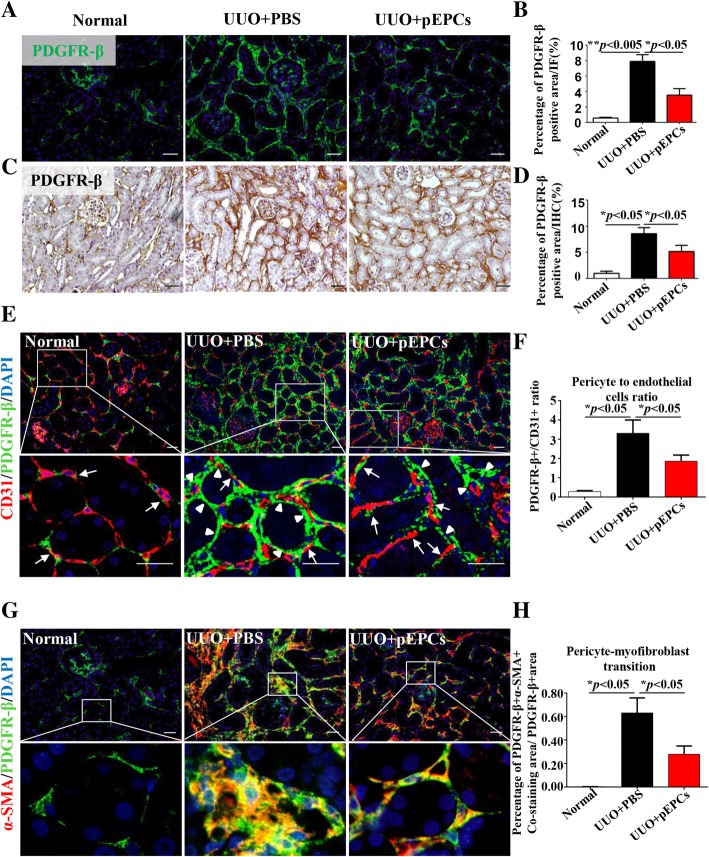Fig. 5.
pEPCs regulated migration of pericytes away from endothelial cells and reduced pericyte–myofibroblast transition. a, c IF and IHC demonstrated a significant increase in the number of pericytes in the renal interstitium after UUO. pEPC infusion reduced the expression of pericytes. b, d The histogram demonstrates a nearly 50% reduction in PDGFR-β-positive pericytes in the UUO+pEPCs group after pEPC treatment. e Further double IF staining for CD31 (red) and PDGFR-β (green) revealed that pericytes were located at a farther distance from endothelial cells in the UUO+PBS group. pEPCs promoted pericyte attachment to endothelial cells and inhibited pericyte proliferation in the interstitium (arrows represent normal attachment of pericyte to endothelial cells, while triangles represent migration of pericytes away from endothelial cells). f Statistical analysis of pericyte to endothelial cell ratio. In a normal kidney, the pericyte to endothelial cell ratio was small. In the UUO+PBS group, increased pericyte and decreased endothelial cell led to a ratio of 3.31:1. In the UUO+pEPCs group, the ratio decreased. g, h Co-staining for α-SMA (red) and PDGFR-β (green) showed extensive pericyte–myofibroblast transition (yellow) in the renal interstitium after UUO. In the UUO+pEPCs group, the co-expression of α-SMA and PDGFR-β/PDGFR-β positive area became less pronounced. All the data are presented as the mean ± SD; n = 3–4/group. *p < 0.05; **p < 0.005. Scale bar, 20 μm

